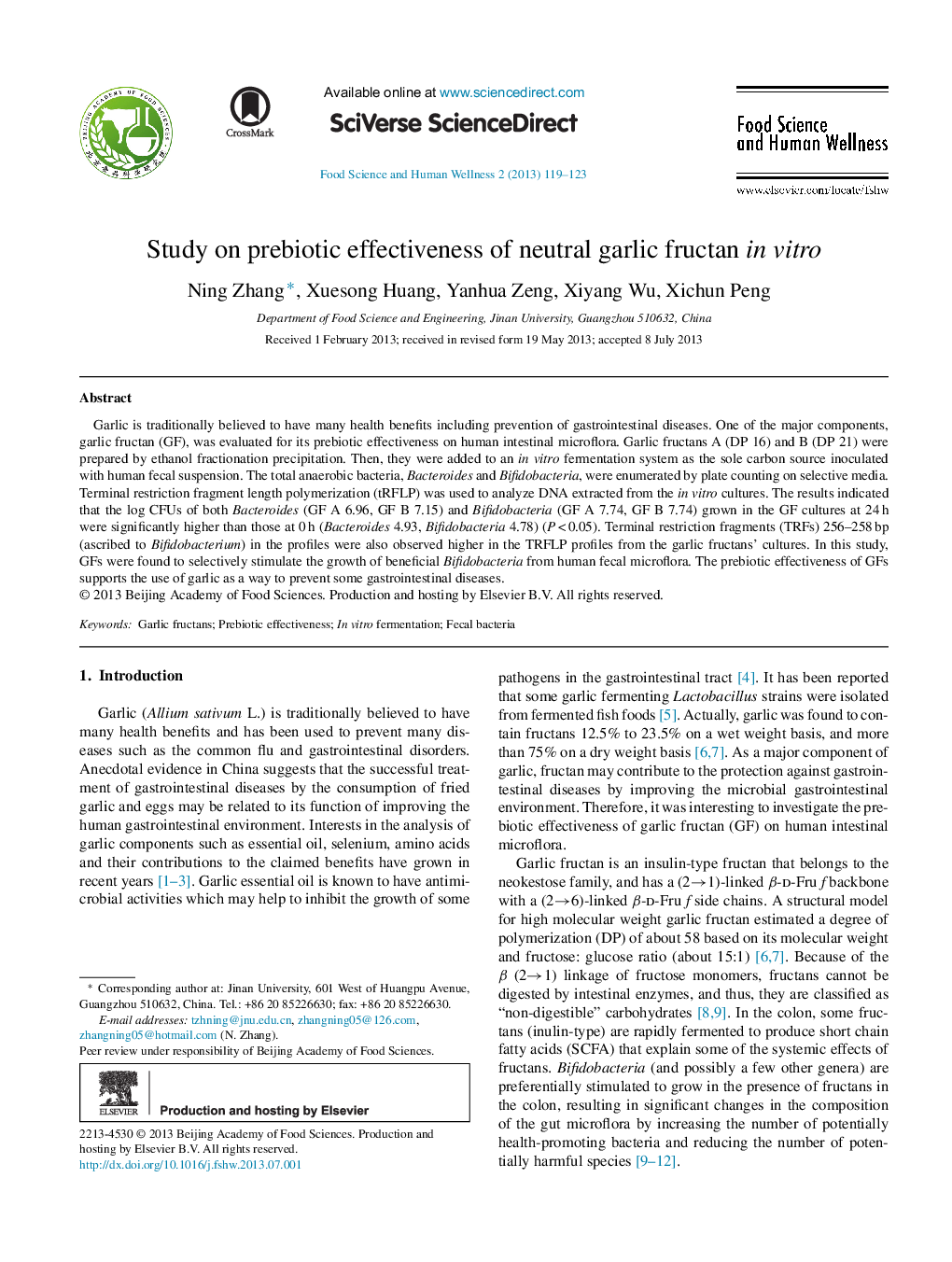| Article ID | Journal | Published Year | Pages | File Type |
|---|---|---|---|---|
| 2691571 | Food Science and Human Wellness | 2013 | 5 Pages |
Garlic is traditionally believed to have many health benefits including prevention of gastrointestinal diseases. One of the major components, garlic fructan (GF), was evaluated for its prebiotic effectiveness on human intestinal microflora. Garlic fructans A (DP 16) and B (DP 21) were prepared by ethanol fractionation precipitation. Then, they were added to an in vitro fermentation system as the sole carbon source inoculated with human fecal suspension. The total anaerobic bacteria, Bacteroides and Bifidobacteria, were enumerated by plate counting on selective media. Terminal restriction fragment length polymerization (tRFLP) was used to analyze DNA extracted from the in vitro cultures. The results indicated that the log CFUs of both Bacteroides (GF A 6.96, GF B 7.15) and Bifidobacteria (GF A 7.74, GF B 7.74) grown in the GF cultures at 24 h were significantly higher than those at 0 h (Bacteroides 4.93, Bifidobacteria 4.78) (P < 0.05). Terminal restriction fragments (TRFs) 256–258 bp (ascribed to Bifidobacterium) in the profiles were also observed higher in the TRFLP profiles from the garlic fructans’ cultures. In this study, GFs were found to selectively stimulate the growth of beneficial Bifidobacteria from human fecal microflora. The prebiotic effectiveness of GFs supports the use of garlic as a way to prevent some gastrointestinal diseases.
